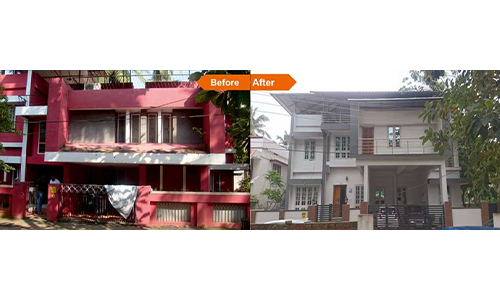Across the globe, bridges, buildings, Houses and industrial frameworks are either approaching or surpassing their expected service life. Decades of use, environmental wear, and increased loads often make these structures unsafe or inefficient. However, total rebuilding is not always feasible, cost-effective, or sustainable.
This is where Re-Structural Engineering plays a role – the science of re-designing, re-configuring, or strengthening existing infrastructure so that it can modernize to fulfill contemporary conditions while still remaining safe and stable. By applying several years of experience and the latest analytical or modeling tools, engineers can enable aging infrastructure to be brought back to life without totally replacing the structure.
Table of Contents
- What Is Re-Structural Engineering?
- Why Aging Infrastructure Needs Rehabilitation
- The Science Behind Re-Structural Engineering
- Key Techniques Used in Re-Structural Engineering
- Benefits of Structural Rehabilitation
- Conclusion
- FAQs
1. What Is Re-Structural Engineering?
Re-Structural Engineering focuses on redesigning or modifying the structure of a building or framework to accommodate changes such as additions, deletions, or load redistribution.It is often needed when a structure is expanded, renovated, or repurposed in some sense.
The engineer must ensure that any modification can resist loads from shear, tension, compression, and torsion, or won’t compromise the overall stability and integrity of the building. Every change must consider how the load variations will affect the entire structure.
A successful re-structural project utilizes extensive analysis, material testing, and strengthening techniques to confirm safety and extended durability.
2. Why Aging Infrastructure Needs Rehabilitation
Infrastructure deteriorates over the time for the following reasons:
- Material fatigue and corrosion
- Environmental stress like heat, moisture, or seismic activity
- Increased load capacity from modernization or population growth
- Outdated design standards that no longer meet current safety regulations
Re-structural engineering work can typically restore lost life to these assets through reinforcement and modifications to meet the modern requirements.
3. The Science Behind Re-Structural Engineering
Thorough technical analysis is the foundation of any successful restructuring project. In restructuring and redesigning services engineers rely on simulation and modeling tools to analyze how loads and stresses will act to the structure. These initiatives include:
- Advanced Structural Analysis: Analyzing how the structure will respond to various conditions.
- Materials Assessment: Analyzing the strength, flexibility, and level of degradation of the materials used.
- Load Distribution Simulation: Analyzing computer models to locate weak points to prevent future structural failures.
All initiatives guarantee that all proposed changes meet safety codes and regulations and avoid costly or dangerous mistakes in the future.
4. Key Techniques Used in Re-Structural Engineering
Re-Structural Engineering services utilizes contemporary techniques to maintain and upgrade the strength of existing structures to different degrees, including:
- Retrofitting: Strengthening beams, columns, and slabs with steel or carbon-fiber composites.
- Load Redistribution: Modifying structural members to optimize force mechanisms through the structure.
- Strengthening Foundations: Underpinning or installing micro-piles to accommodate new or higher loads on foundations.
- Corrosion Protection: Using coatings or cathodic protection systems to mitigate deterioration of structural materials.
- Structural Health Monitoring: Implementing sensors to collect ongoing stress, vibration, and other performance data.
5. Benefits of Structural Rehabilitation
- Cost efficiency: More affordable than demolishing and building new structures.
- Time savings: Saves time and limits the downtime of commercial or public structures.
- Sustainability: Minimizes the dependence on materials, reduces waste, and lowers the carbon footprint.
- Safety: Structural enhancements to meet current building codes.
- Preservation: Preserves the architectural and cultural integrity of heritage structures.
Conclusion
Re-structural engineering is not solely repair—it is about planning the future for existing structures. Through advanced simulations, pre-specified material testing, and smart reinforcing, engineers can help ensure existing buildings built decades earlier can be safe and serve their purpose for many years into the future.
In a time where sustainability and efficiency are more important than ever, re-structural engineering and skilled building contractors together form the bridge between old and new.
Extend the Life of Your Structure with Expert Re-Structural Engineering
Frequently Asked Questions
To redesign and reinforce existing structures so they can safely accommodate modifications or additional loads.
They use sophisticated simulation tools, load analysis, and reinforcement strategies that take shear, tension, compression, and torsion forces into account.
When there are plans for major additions or layout changes, or when signs of structural distress or your house or building do not meet the current requirement.

